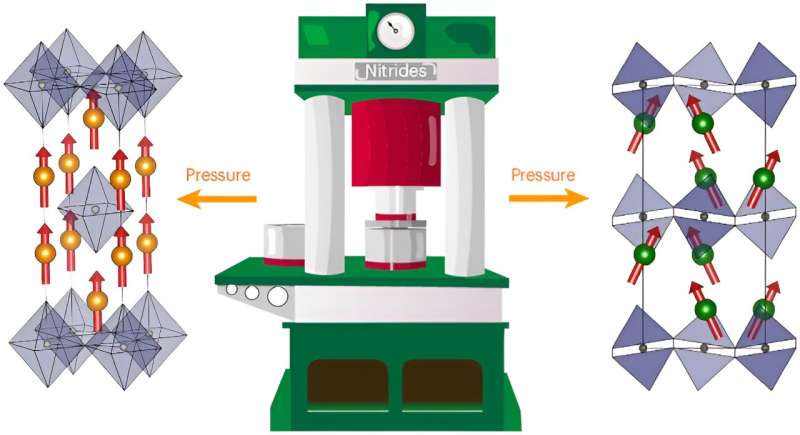This article has been reviewed according to Science X's editorial process and policies. Editors have highlighted the following attributes while ensuring the content's credibility:
fact-checked
peer-reviewed publication
trusted source
proofread
Synthetic pathway for promising nitride compounds discovered

Ruddlesden-Popper compounds are a class of materials with a special layered structure that makes them interesting for numerous applications—as superconductors or catalysts, for example, or for use in photovoltaics. There have been many halides and oxides of this structural type before now, but no nitrides. Although scientists expected Ruddlesden-Popper nitrides to have outstanding material properties, they were unable to actually manufacture them.
Now researchers led by Dr. Simon Kloß from the Department of Chemistry at LMU have developed a special synthetic pathway which has enabled them to manufacture nitride materials that crystallize in the Ruddlesden-Popper structural type. The study is published in the journal Nature Chemistry.
Stability of nitrogen posed a challenge
The stability of the triple bond in the nitrogen molecule (N2) and the low electron affinity of the element made it very challenging for the chemists to manufacture the nitrogen-rich Ruddlesden-Popper nitrides. They achieved a breakthrough by carrying out the syntheses under extreme conditions.
Employing large-volume presses, they compressed their samples at pressures of 8 gigapascals, which is equivalent to 80,000 bars. Then they used an active nitrogen source such as sodium azide to prepare the rare-earth transition-metal nitride compounds.
"We think we can systematically investigate Ruddlesden-Popper nitrides compounds with our new synthesis strategy," says Kloß. The scientists demonstrated this by investigating three new compounds of this materials class—a cerium-tantalum nitride (Ce2TaN4) and praseodymium- and neodymium-rhenium nitrides (Ln2ReN4 (Ln = Pr, Nd)).
"These three initial materials already exhibit a rich variety of structural, electronic, and magnetic properties," says Kloß.
The praseodymium and the neodymium compounds displayed exciting magnetic characteristics. For example, the neodymium compound is a remarkable hard ferromagnet with irreversible magnetic behavior. In addition, the tantalum compound is a semiconductor with properties that make it exciting for applications in the energy conversion domain or as a ferroelectric material.
"The same synthetic method will probably lead to other Ruddlesden-Popper nitride compounds and their derivatives," explains Kloß. "Consequently, a large new class of nitrides is waiting to be researched."
More information: M. Weidemann et al, High-pressure synthesis of Ruddlesden–Popper nitrides, Nature Chemistry (2024). DOI: 10.1038/s41557-024-01558-1
Journal information: Nature Chemistry
Provided by Ludwig Maximilian University of Munich





















